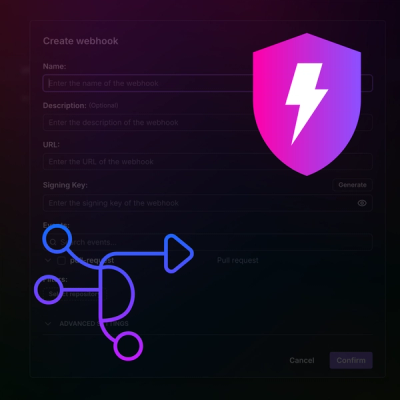
Product
Introducing GitHub Actions Scanning Support
Detect malware, unsafe data flows, and license issues in GitHub Actions with Socket’s new workflow scanning support.
@samchon/openapi
Advanced tools
Next version is coming.
This is the
nextversion README document.If you wanna see the latest version, go to the
v1.0branch.
@samchon/openapiflowchart
subgraph "OpenAPI Specification"
v20("Swagger v2.0") --upgrades--> emended[["OpenAPI v3.1 (emended)"]]
v30("OpenAPI v3.0") --upgrades--> emended
v31("OpenAPI v3.1") --emends--> emended
end
subgraph "OpenAPI Generator"
emended --normalizes--> migration[["Migration Schema"]]
migration --"Artificial Intelligence"--> lfc{{"LLM Function Calling"}}
lfc --"OpenAI"--> chatgpt("ChatGPT")
lfc --"Anthropic"--> claude("Claude")
lfc --"Google"--> gemini("Gemini")
lfc --"Meta (Facebook)"--> llama("Llama")
end
OpenAPI definitions, converters and LLM function calling application composer.
@samchon/openapi is a collection of OpenAPI types for every versions, and converters for them. In the OpenAPI types, there is an "emended" OpenAPI v3.1 specification, which has removed ambiguous and duplicated expressions for the clarity. Every conversions are based on the emended OpenAPI v3.1 specification.
@samchon/openapi also provides LLM (Large Language Model) function calling application composer from the OpenAPI document with many strategies. With the HttpLlm module, you can perform the LLM funtion calling extremely easily just by delivering the OpenAPI (Swagger) document.
HttpLlm.application()IHttpLlmApplication<Model>IHttpLlmFunction<Model>IChatGptSchema: OpenAI ChatGPTIClaudeSchema: Anthropic ClaudeIGeminiSchema: Google GeminiILlamaSchema: Meta LlamaILlmSchemaV3: middle layer based on OpenAPI v3.0 specificationILlmSchemaV3_1: middle layer based on OpenAPI v3.1 specificationnpm install @samchon/openapi --tag next
Just install by npm i @samchon/openapi --tag next command.
Here is an example code utilizing the @samchon/openapi for LLM function calling purpose.
import {
HttpLlm,
IChatGptSchema,
IHttpLlmApplication,
IHttpLlmFunction,
OpenApi,
OpenApiV3,
OpenApiV3_1,
SwaggerV2,
} from "@samchon/openapi";
import fs from "fs";
import typia from "typia";
const main = async (): Promise<void> => {
// read swagger document and validate it
const swagger:
| SwaggerV2.IDocument
| OpenApiV3.IDocument
| OpenApiV3_1.IDocument = JSON.parse(
await fs.promises.readFile("swagger.json", "utf8"),
);
typia.assert(swagger); // recommended
// convert to emended OpenAPI document,
// and compose LLM function calling application
const document: OpenApi.IDocument = OpenApi.convert(swagger);
const application: IHttpLlmApplication<"chatgpt"> = HttpLlm.application({
model: "chatgpt",
document,
});
// Let's imagine that LLM has selected a function to call
const func: IHttpLlmFunction<"chatgpt"> | undefined =
application.functions.find(
// (f) => f.name === "llm_selected_fuction_name"
(f) => f.path === "/bbs/articles" && f.method === "post",
);
if (func === undefined) throw new Error("No matched function exists.");
// actual execution is by yourself
const article = await HttpLlm.execute({
connection: {
host: "http://localhost:3000",
},
application,
function: func,
arguments: {
// arguments composed by LLM
body: {
title: "Hello, world!",
body: "Let's imagine that this argument is composed by LLM.",
thumbnail: null,
},
},
});
console.log("article", article);
};
main().catch(console.error);
flowchart
v20(Swagger v2.0) --upgrades--> emended[["<b><u>OpenAPI v3.1 (emended)</u></b>"]]
v30(OpenAPI v3.0) --upgrades--> emended
v31(OpenAPI v3.1) --emends--> emended
emended --downgrades--> v20d(Swagger v2.0)
emended --downgrades--> v30d(Swagger v3.0)
@samchon/openapi support every versions of OpenAPI specifications with detailed TypeScript types.
Also, @samchon/openapi provides "emended OpenAPI v3.1 definition" which has removed ambiguous and duplicated expressions for clarity. It has emended original OpenAPI v3.1 specification like above. You can compose the "emended OpenAPI v3.1 document" by calling the OpenApi.convert() function.
OpenApiV3_1.IPathItem.parameters to OpenApi.IOperation.parametersOpenApiV3_1.IOperation membersOpenApiV3_1.IComponents.examplesOpenApiV3_1.IJsonSchema.IMixedOpenApiV3_1.IJsonSchema.__ISignificant.nullableOpenAPI.IJsonSchema.IArray.itemsOpenApi.IJsonSchema.ITuple.prefixItemsOpenApiV3_1.IJsonSchema.IAnyOf to OpenApi.IJsonSchema.IOneOfOpenApiV3_1.IJsonSchema.IRecursiveReference to OpenApi.IJsonSchema.IReferenceOpenApiV3_1.IJsonSchema.IAllOf to OpenApi.IJsonSchema.IObjectConversions to another version's OpenAPI document is also based on the "emended OpenAPI v3.1 specification" like above diagram. You can do it through OpenApi.downgrade() function. Therefore, if you want to convert Swagger v2.0 document to OpenAPI v3.0 document, you have to call two functions; OpenApi.convert() and then OpenApi.downgrade().
At last, if you utilize typia library with @samchon/openapi types, you can validate whether your OpenAPI document is following the standard specification or not. Just visit one of below playground links, and paste your OpenAPI document URL address. This validation strategy would be superior than any other OpenAPI validator libraries.
import { OpenApi, OpenApiV3, OpenApiV3_1, SwaggerV2 } from "@samchon/openapi";
import typia from "typia";
const main = async (): Promise<void> => {
// GET YOUR OPENAPI DOCUMENT
const response: Response = await fetch(
"https://raw.githubusercontent.com/samchon/openapi/master/examples/v3.0/openai.json"
);
const document: any = await response.json();
// TYPE VALIDATION
const result = typia.validate<
| OpenApiV3_1.IDocument
| OpenApiV3.IDocument
| SwaggerV2.IDocument
>(document);
if (result.success === false) {
console.error(result.errors);
return;
}
// CONVERT TO EMENDED
const emended: OpenApi.IDocument = OpenApi.convert(document);
console.info(emended);
};
main().catch(console.error);
flowchart TD
subgraph "OpenAPI Specification"
v20("Swagger v2.0") --upgrades--> emended[["OpenAPI v3.1 (emended)"]]
v30("OpenAPI v3.0") --upgrades--> emended
v31("OpenAPI v3.1") --emends--> emended
end
subgraph "OpenAPI Generator"
emended --normalizes--> migration[["Migration Schema"]]
migration --"Artificial Intelligence"--> lfc{{"<b><u>LLM Function Calling</b></u>"}}
lfc --"OpenAI"--> chatgpt("ChatGPT")
lfc --"Anthropic"--> claude("Claude")
lfc --"Google"--> gemini("Gemini")
lfc --"Meta (Facebook)"--> llama("Llama")
end
LLM function calling application from OpenAPI document.
@samchon/openapi provides LLM (Large Language Model) funtion calling application from the "emended OpenAPI v3.1 document". Therefore, if you have any HTTP backend server and succeeded to build an OpenAPI document, you can easily make the A.I. chatbot application.
In the A.I. chatbot, LLM will select proper function to remotely call from the conversations with user, and fill arguments of the function automatically. If you actually execute the function call through the HttpLlm.execute() funtion, it is the "LLM function call."
Let's enjoy the fantastic LLM function calling feature very easily with @samchon/openapi.
IChatGptSchema: OpenAI ChatGPTIClaudeSchema: Anthropic Claude (same with ILlmSchemaV3_1)IGeminiSchema: Google GeminiILlamaSchema: Meta (Facebook) Llama (same with ILlmSchemaV3_1)ILlmSchemaV3: middle layer based on OpenAPI v3.0 specificationILlmSchemaV3_1: middle layer based on OpenAPI v3.1 specification[!NOTE]
You also can compose
ILlmApplicationfrom a class type withtypia.https://typia.io/docs/llm/application
import { ILlmApplication } from "@samchon/openapi"; import typia from "typia"; const app: ILlmApplication<"chatgpt"> = typia.llm.application<YourClassType, "chatgpt">();
[!TIP]
LLM selects proper function and fill arguments.
In nowadays, most LLM (Large Language Model) like OpenAI are supporting "function calling" feature. The "LLM function calling" means that LLM automatically selects a proper function and fills parameter values from conversation with the user (may by chatting text).
Actual function call execution is by yourself.
LLM (Large Language Model) providers like OpenAI selects a proper function to call from the conversations with users, and fill arguments of it. However, function calling feature supported by LLM providers do not perform the function call execution. The actual execution responsibility is on you.
In @samchon/openapi, you can execute the LLM function calling by HttpLlm.execute() (or HttpLlm.propagate()) function. Here is an example code executing the LLM function calling through the HttpLlm.execute() function. As you can see, to execute the LLM function call, you have to deliver these informations:
Here is the example code executing the LLM function call with @samchon/openapi.
test/examples/chatgpt-function-call-to-sale-create.tsMicrosoft Surpace Pro 9examples/arguments/chatgpt.microsoft-surface-pro-9.input.jsonimport {
HttpLlm,
IChatGptSchema,
IHttpLlmApplication,
IHttpLlmFunction,
OpenApi,
OpenApiV3,
OpenApiV3_1,
SwaggerV2,
} from "@samchon/openapi";
import OpenAI from "openai";
import typia from "typia";
const main = async (): Promise<void> => {
// Read swagger document and validate it
const swagger:
| SwaggerV2.IDocument
| OpenApiV3.IDocument
| OpenApiV3_1.IDocument = JSON.parse(
await fetch(
"https://github.com/samchon/shopping-backend/blob/master/packages/api/swagger.json",
).then((r) => r.json()),
);
typia.assert(swagger); // recommended
// convert to emended OpenAPI document,
// and compose LLM function calling application
const document: OpenApi.IDocument = OpenApi.convert(swagger);
const application: IHttpLlmApplication<"chatgpt"> = HttpLlm.application({
model: "chatgpt",
document,
});
// Let's imagine that LLM has selected a function to call
const func: IHttpLlmFunction<"chatgpt"> | undefined =
application.functions.find(
// (f) => f.name === "llm_selected_fuction_name"
(f) => f.path === "/shoppings/sellers/sale" && f.method === "post",
);
if (func === undefined) throw new Error("No matched function exists.");
// Get arguments by ChatGPT function calling
const client: OpenAI = new OpenAI({
apiKey: "<YOUR_OPENAI_API_KEY>",
});
const completion: OpenAI.ChatCompletion =
await client.chat.completions.create({
model: "gpt-4o",
messages: [
{
role: "assistant",
content:
"You are a helpful customer support assistant. Use the supplied tools to assist the user.",
},
{
role: "user",
content: "<DESCRIPTION ABOUT THE SALE>",
// https://github.com/samchon/openapi/blob/master/examples/function-calling/prompts/microsoft-surface-pro-9.md
},
],
tools: [
{
type: "function",
function: {
name: func.name,
description: func.description,
parameters: func.parameters as Record<string, any>,
strict: true,
},
},
],
});
const toolCall: OpenAI.ChatCompletionMessageToolCall =
completion.choices[0].message.tool_calls![0];
// Actual execution by yourself
const article = await HttpLlm.execute({
connection: {
host: "http://localhost:37001",
},
application,
function: func,
input: JSON.parse(toolCall.function.arguments),
});
console.log("article", article);
};
main().catch(console.error);
Arguments from both Human and LLM sides.
When composing parameter arguments through the LLM (Large Language Model) function calling, there can be a case that some parameters (or nested properties) must be composed not by LLM, but by Human. File uploading feature, or sensitive information like secret key (password) cases are the representative examples.
In that case, you can configure the LLM function calling schemas to exclude such Human side parameters (or nested properties) by IHttpLlmApplication.options.separate property. Instead, you have to merge both Human and LLM composed parameters into one by calling the HttpLlm.mergeParameters() before the LLM function call execution of HttpLlm.execute() function.
Here is the example code separating the file uploading feature from the LLM function calling schema, and combining both Human and LLM composed parameters into one before the LLM function call execution.
test/examples/claude-function-call-separate-to-sale-create.tsMicrosoft Surpace Pro 9examples/arguments/claude.microsoft-surface-pro-9.input.jsonimport Anthropic from "@anthropic-ai/sdk";
import {
ClaudeTypeChecker,
HttpLlm,
IClaudeSchema,
IHttpLlmApplication,
IHttpLlmFunction,
OpenApi,
OpenApiV3,
OpenApiV3_1,
SwaggerV2,
} from "@samchon/openapi";
import typia from "typia";
const main = async (): Promise<void> => {
// Read swagger document and validate it
const swagger:
| SwaggerV2.IDocument
| OpenApiV3.IDocument
| OpenApiV3_1.IDocument = JSON.parse(
await fetch(
"https://github.com/samchon/shopping-backend/blob/master/packages/api/swagger.json",
).then((r) => r.json()),
);
typia.assert(swagger); // recommended
// convert to emended OpenAPI document,
// and compose LLM function calling application
const document: OpenApi.IDocument = OpenApi.convert(swagger);
const application: IHttpLlmApplication<"claude"> = HttpLlm.application({
model: "claude",
document,
options: {
reference: true,
separate: (schema) =>
ClaudeTypeChecker.isString(schema) &&
!!schema.contentMediaType?.startsWith("image"),
},
});
// Let's imagine that LLM has selected a function to call
const func: IHttpLlmFunction<"claude"> | undefined =
application.functions.find(
// (f) => f.name === "llm_selected_fuction_name"
(f) => f.path === "/shoppings/sellers/sale" && f.method === "post",
);
if (func === undefined) throw new Error("No matched function exists.");
// Get arguments by ChatGPT function calling
const client: Anthropic = new Anthropic({
apiKey: "<YOUR_ANTHROPIC_API_KEY>",
});
const completion: Anthropic.Message = await client.messages.create({
model: "claude-3-5-sonnet-latest",
max_tokens: 8_192,
messages: [
{
role: "assistant",
content:
"You are a helpful customer support assistant. Use the supplied tools to assist the user.",
},
{
role: "user",
content: "<DESCRIPTION ABOUT THE SALE>",
// https://github.com/samchon/openapi/blob/master/examples/function-calling/prompts/microsoft-surface-pro-9.md
},
],
tools: [
{
name: func.name,
description: func.description,
input_schema: func.separated!.llm as any,
},
],
});
const toolCall: Anthropic.ToolUseBlock = completion.content.filter(
(c) => c.type === "tool_use",
)[0]!;
// Actual execution by yourself
const article = await HttpLlm.execute({
connection: {
host: "http://localhost:37001",
},
application,
function: func,
input: HttpLlm.mergeParameters({
function: func,
llm: toolCall.input as any,
human: {
// Human composed parameter values
content: {
files: [],
thumbnails: [
{
name: "thumbnail",
extension: "jpeg",
url: "https://serpapi.com/searches/673d3a37e45f3316ecd8ab3e/images/1be25e6e2b1fb7509f1af89c326cb41749301b94375eb5680b9bddcdf88fabcb.jpeg",
},
// ...
],
},
},
}),
});
console.log("article", article);
};
main().catch(console.error);
FAQs
OpenAPI definitions and converters for 'typia' and 'nestia'.
The npm package @samchon/openapi receives a total of 90,805 weekly downloads. As such, @samchon/openapi popularity was classified as popular.
We found that @samchon/openapi demonstrated a healthy version release cadence and project activity because the last version was released less than a year ago. It has 1 open source maintainer collaborating on the project.
Did you know?

Socket for GitHub automatically highlights issues in each pull request and monitors the health of all your open source dependencies. Discover the contents of your packages and block harmful activity before you install or update your dependencies.

Product
Detect malware, unsafe data flows, and license issues in GitHub Actions with Socket’s new workflow scanning support.

Product
Add real-time Socket webhook events to your workflows to automatically receive pull request scan results and security alerts in real time.

Research
The Socket Threat Research Team uncovered malicious NuGet packages typosquatting the popular Nethereum project to steal wallet keys.